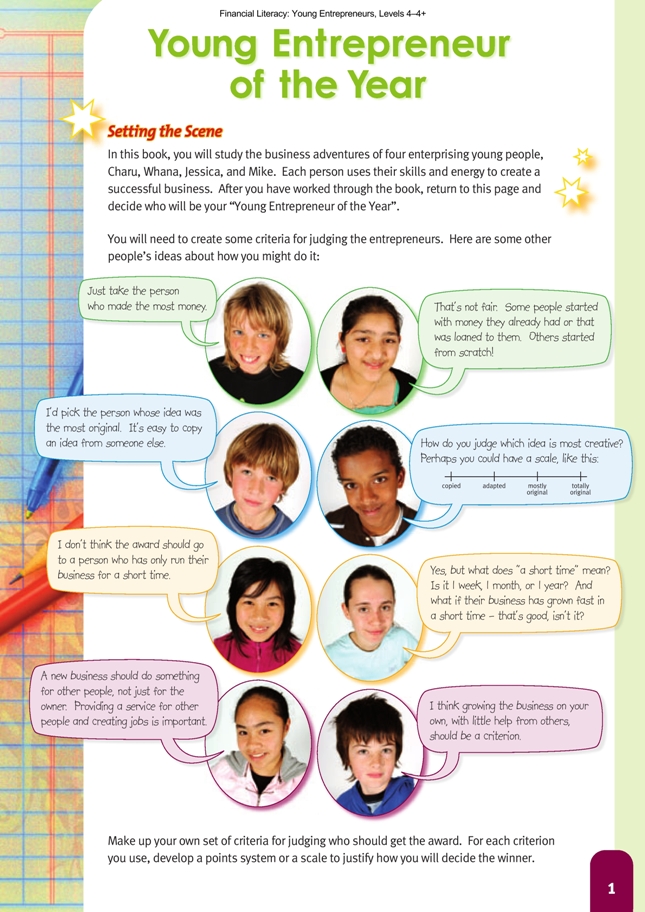This is a level 4 statistics activity from the Figure It Out series.
A PDF of the student activity is included.
Click on the image to enlarge it. Click again to close. Download PDF (1156 KB)
develop a scale against which to rate data collected for an investigation.
Copymaster
Setting the scene
Financial understanding
An entrepreneur is an “ideas person” who takes risks to provide goods and services to their community (which could be a local community or the world!). An entrepreneur who intends to make a profit by selling to customers is an economic entrepreneur; one who provides those goods and services for the community’s benefit is called a social entrepreneur. Both entrepreneurs use the same enterprising attributes: vision, innovation, risk taking, and enterprise. Entrepreneurs make an essential contribution to their community, making work for themselves and for others. They also provide new goods and services and, if successful, satisfy some of the community’s needs and wants.
The young characters in this Figure It Out Financial Literacy book have a vision of what is possible; they are enterprising, and they apply a range of enterprising attributes to make their ideas happen. During the activities, students will see these enterprising attributes in action and will gain understandings of economic and financial ideas that support that action. In doing so, students will see the application of mathematics, social sciences (including economics), and English skills. The characters demonstrate knowledge, skills, attitudes, and competencies that are outlined in The New Zealand Curriculum (2007) vision statement. The activities in Young Entrepreneurs demonstrate how the learning areas, vision statement, and key competencies can be connected through learning.
Charu, Whana, Jessica, and Mike are economic entrepreneurs. Entrepreneurs can manage their risks by becoming economically and financially literate. In this series of activities, students apply economic principles, such as supply and demand, and trade-offs (opportunity costs). They also learn more about financial budgeting (planning), keeping financial records, and interpreting financial information.
Note that the final reflective question on page 28 asks the students to make their choice of the “Young Entrepreneur of the Year”. You may need, at that stage, to remind them to look again at the criteria they established for this award on page 1. Criteria are standards by which the value of something is judged. In the case of the “Young Entrepreneur of the Year” contest, some criteria for their business are given on page 1:
• profit (money) making
• originality
• duration (length of time)
• service to others.
Students may think of other criteria, such as the age of the person, independence from outside help, or perseverance. They should also consider the weighting given to each criterion. For example, the award might be given on the basis of these three criteria:![]()
Scales or categories might be used to judge each criterion. For example, profitability might be judged using these categories:
Profit in $ per annum:
A. Less than $100
B. $100–499.99
C. $500–1,000
D. More than $1,000.
These categories ignore important factors, such as initial capital and the nature of the business (for example, high or low turnover). Note that making a profit is necessary if a business is to provide goods and services and employment to others in their community in the longer term.
Students will need to combine their weightings with their criteria and categories. For example, a score for originality might be:
Answers
Setting the scene
Criteria for the award will vary.
